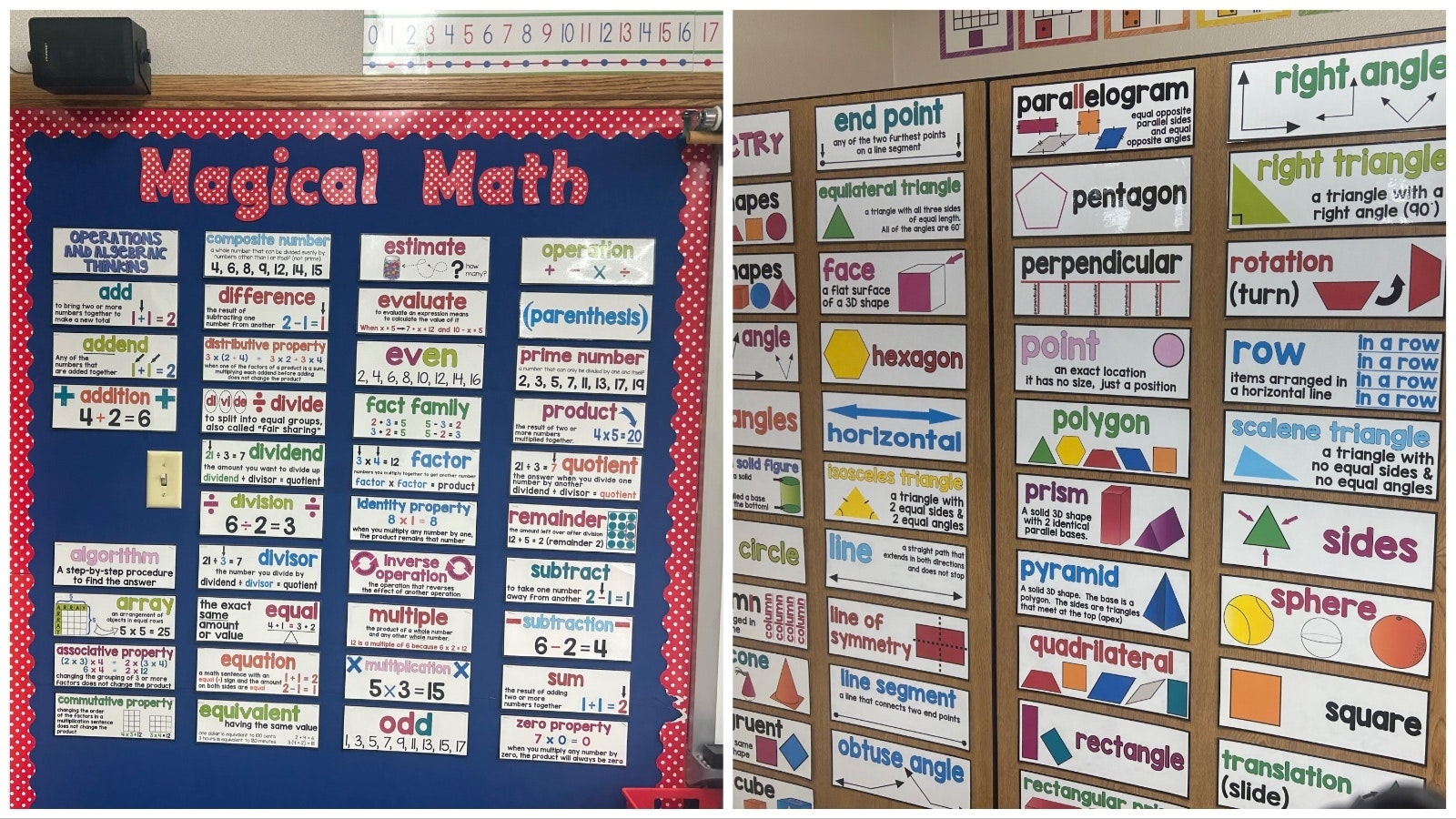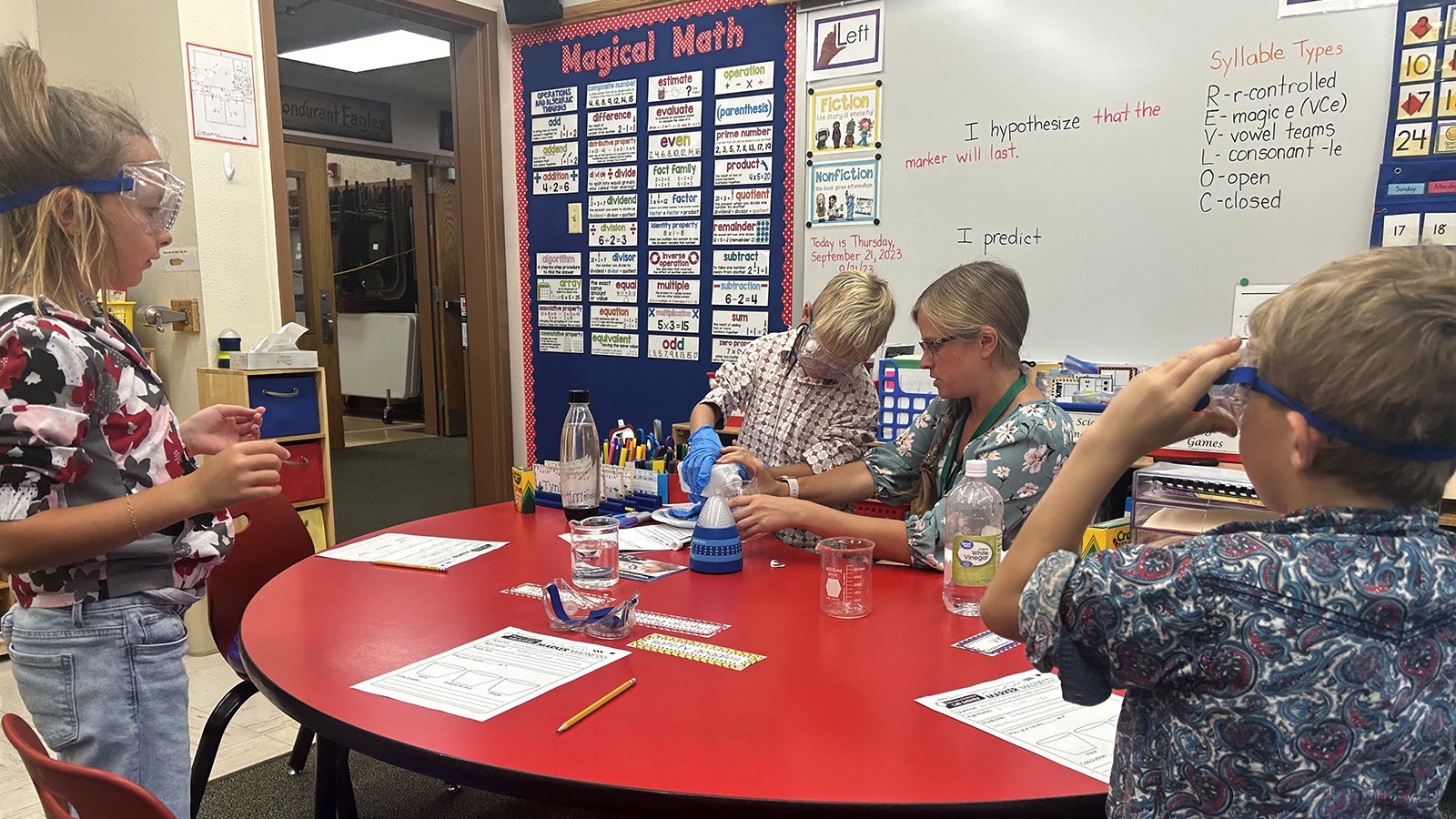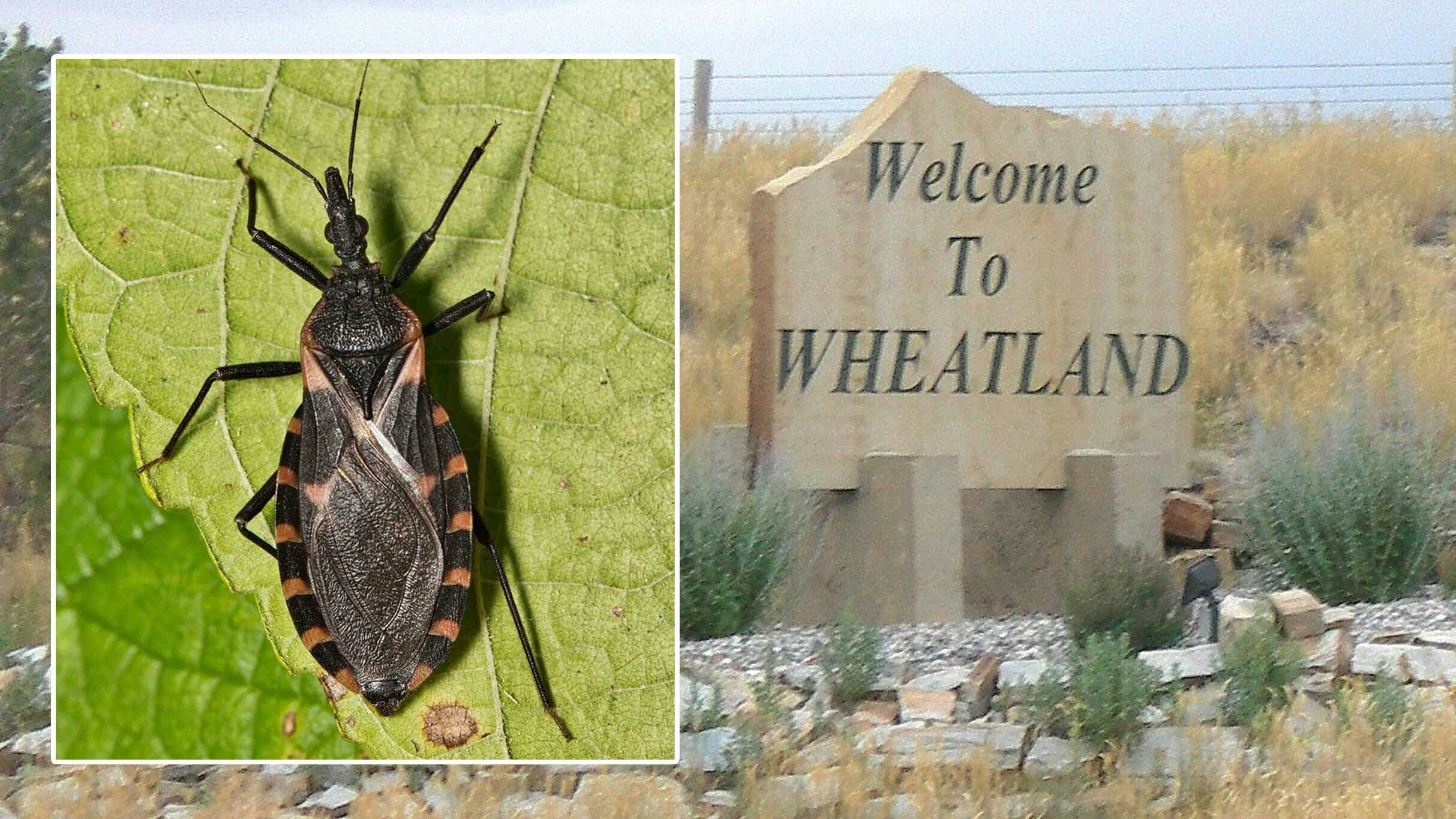BONDURANT — On a blustery afternoon in late September, three young students clad in safety goggles and blue latex gloves are conducting an elementary school science experiment to determine if permanent ink is soluble in three different liquids.
Bondurant Elementary, home of the Eagles, is a one-room kindergarten through third grade public school in the Upper Hoback River Valley in southwest Wyoming. It’s one of 20 Wyoming public schools with fewer than 10 students this year.
Over her 11 years of teaching here, Karin Unruh has had as many as nine students and as few as two.
This year’s class includes Jack Tolson, a 6-year-old kindergartener; Brady Saunders, a 7-year-old second grader; and Tynlee Smith, an 8-year-old third grader. During this lesson, they’re using the scientific method to find a pertinent question, develop a hypothesis, conduct an experiment and draw conclusions from it.
Small, Not Backward
Their hypothesis is that the permanent ink drawn on three coffee filters and placed in separate beakers containing water, white vinegar and rubbing alcohol will stay put.
The students are asking questions, writing results and drawing pictures on worksheets. The ink is starting to color the water in a beaker filled with rubbing alcohol, while the other two are mostly unchanged.
The contents of this elaborate classroom provide an all-out frontal assault on the senses. One display shows the differences between life science, physical science and earth science along with the tools and careers that fall under each. Another shows geometric shapes — polygon, prism, pyramid and quadrilateral. Others show the days of the week, months of the year and the elements of time.
On the white board at the front signs show direction left from right, another shows how many ways two numbers can add up to 10 and the difference between fiction – stories that are pretend – and nonfiction – stories that provide factual information.

Practice Patience
Despite the classroom’s busyness, it’s a calm and caring learning environment. Students of differing ages, abilities and education levels in a one-room school must learn to practice patience and wait their turn.
Unruh told Cowboy State Daily it’s critical that they develop those skills because while teaching some subjects, like language arts, she can have three different lessons underway, and that means three conversations on three topics at the same time.
“One of the biggest challenges is trying to adapt to a wide variety of needs and provide the material they need to the level they need it so they can understand it,” Unruh said. “Luckily, the kids here are very understanding. This is all they know, so they learn to be good classmates and to help each other learn.”
These students don’t yet know how unique it is to attend a one-room school and receive this level of one-on-one educational attention, Unruh said.
“Brady and I really got a lot of attention last year,” Tynlee told Cowboy State Daily. They were the only two kids who attended Bondurant Elementary last year.

Everyone Knows Everyone
Unruh said she keeps an eye on new families moving into the community. She has taught siblings from several families and developed relationships with many families over the years. A unique aspect of a one-room school setting for the teacher is that she develops a close relationship with the whole community.
Bondurant Elementary has two classrooms but only uses one at a time. One classroom is for science, art and social studies. The other is mainly used for language arts. The school has a small gym with two basketball hoops, a kitchen where the kids can warm up their lunch and wash dishes, and a playground out back next to the old Bondurant School, built in the late 1950s.
“People are often surprised that there are still one-room public schools like this,” Unruh said. “We can offer a great education in this setting because we give the students a lot of personal instruction.”
Unruh grew up in Illinois but spent her summers in Wyoming since she was a child. Her parents are both teachers. She enjoys hiking and spends lot of time in the winter teaching her students cross-country skiing. She said it’s a good lifetime sport, and it’s important to get the students outside to burn off some energy.

‘It’s A Good Kind Of Busy’
They do some kind of physical education at least twice a week and also put on a Christmas presentation for the community every December. Santa Claus always attends the event, she said.
There is no school secretary and Unruh is the only adult at the school on most days. She taught one year at Pinedale Elementary before accepting the position at Bondurant. She interacts with other teachers from Wyoming’s one-room schools as often as possible.
“It keeps me busy but it’s a good kind of busy,” she said.
The valley Bondurant occupies is ringed with timber-covered slopes and is one of Wyoming’s coldest places.
“This is a tough place to live in the winter because it gets very cold,” she said. “But the benefits of winter outweigh the challenges.”
Jack Tolson said when he grows up he wants to be a “bone finder.”
“Do you mean a paleontologist?” asked Miss Unruh.
“Sure,” he said.
Tynlee Smith said she wants to be a veterinarian. She will move on to Pinedale Elementary School next year.
Brady Saunders wants to be a scientist.
As the school day ended at 3 p.m., the students didn’t have time for final conclusions regarding their experiment. It appeared that their hypothesis was solid, except for the ink that appeared soluble in rubbing alcohol.
The following day they had a field trip to watch the annual Pinedale High School Homecoming Parade.






